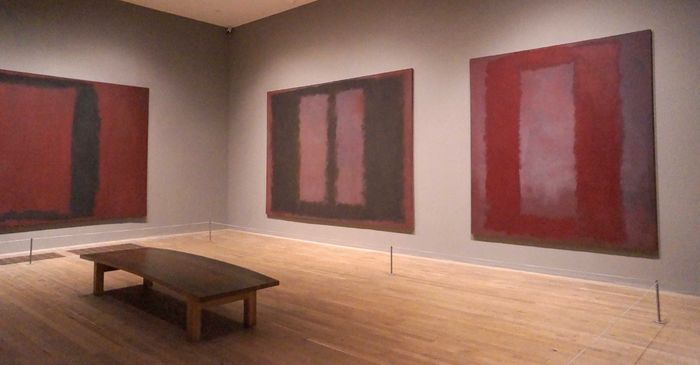Sex, Drugs, and Bullet-holes: L’Enfant Terrible and the Politics of the Panthéon
Liberté, Égalité, and an unsurprising lack of diversité…France’s ‘punk-poet’ Arthur Rimbaud deemed too wild for the Panthéon, but what does this mean for the literary canon, Anna Mahtani wonders?
Over the past few months there has been a growing petition in France to move the ashes of the 19th century poet Arthur Rimbaud into the Panthéon. Modelled after its Roman namesake, the Panthéon is a monument to the people who have shaped France – Marie Curie, Voltaire, and Victor Hugo, to name but a few. Despite a growing movement to include LGBTQ+ authors in the French canon, President Macron has decided against moving Rimbaud’s ashes to the Panthéon. This decision highlights a wider conversation: the legacy of Art vs the Artist. Whether or not it is fair to celebrate anti-establishment artists by placing them in the very establishment they rebelled against is the subject of much debate. Macron’s decision respects the wishes of the poet’s living relatives: wishes which do not aim to preserve Rimbaud’s interests and identity, but rather object to his being buried with lover and fellow poet, Verlaine. His great-grand-niece was quoted as saying “everyone will think ‘gay’ but that’s not true […] it was just a few years of his youth.”
“this decision highlights a wider conversation: the legacy of Art vs the Artist”
Run-away prodigy, rebel, and literary crush of every French 14-year-old (myself included – I blame DiCaprio), Rimbaud is something of a cult figure, his relationship with Paul Verlaine being something of a focus. With the pair featuring in countless biographies, documentaries, a biopic and even a studio album, it’s tempting to frame their affair as a tragic love-story – but should we be romanticising the private lives of such public poets? The reality behind it is that Verlaine was a married man pushing thirty when he took in the teenage run-away Rimbaud; the two spent a tumultuous few years drugged and on the run before Verlaine ended the relationship – and Rimbaud’s career – by shooting him in the arm. Not all that romantic, as it turns out…
Why Rimbaud?
‘We must be absolutely modern’ - Arthur Rimbaud
Rimbaud challenged the Romantics and the role of the poet, choosing instead to be a ‘juggler’, tricking and surprising the reader with unsuspected imagery. He stated in a letter that the poet must brave “the systematic derangement of all the senses” to birth a new “universal language”. As a French Symbolist, he markedly influenced modern poetry, the beatnik generation, and countless songwriters: Bob Dylan, Patti Smith, Kurt Cobain, Jim Morrison, and Van Morrison to name but a few. In their song ‘Ghetto Defendant,’ The Clash call him “The Ghetto Prince of Gutter Poets… Buried in Charleville… Shut up in Eternity”. Despite being an award-winning student of Latin, Rimbaud turned his back on his classical education. He was an outsider by choice, preferring to face the crowds of London than be claimed by the French bourgeoisie. He abandoned poetry at the age of 21 and died aged 37.
To the Great Men of a Respectful Nation, the inscription on the wall of the Panthéon, has historically been taken quite literally, commemorating only 5 women to 75 men. But the monument isn’t the it-girl of French culture it clearly wants to be; plenty of incredible authors and innovators have been snubbed. Consider Barthes, Proust, Flaubert, Beauvoir, and Rostand – the French canon isn’t empty of LGBTQ+ authors. The problem is that their lives, rather than their works, are examined and cherry picked. Who has the right to determine what art is ‘right?’ Honouring the authors who have formed national identity is important, but if the government it given the choice, it inevitably becomes political.
“the monument isn’t the it-girl of French culture it clearly wants to be”
Putting aside the national debate – as someone who spent his adult life running from his home country, and from poetry, it’s hard to imagine Rimbaud would appreciate being interred in a monument to both. When asked on his deathbed what he thought of his poetic oeuvre, he sneered, “poetry is a pile of shit”, and turned away. For him, personal identity and that of the artist are separate: “Je est un autre” - ‘I’ is someone else. Of course, the question of Art vs Artist isn’t a new one. And as much as a work should speak for itself, in rejecting the artist aren’t we rejecting the essence of the art? And if we’re going to reject one, shouldn’t we reject them all, not just those deemed inappropriate?
It’s clear that France needs to come to grips with the diversity at its heart, and the Panthéon is an outdated symbol of its refusal to do so. Discussions around sexuality, race, and gender have long been avoided, but celebrating the abusive affair of a man in his 30s with a boy who ran away from school is worth less than a band aid. We shouldn’t be unearthing these authors only to bury them under new ground – we should strive to keep their work alive. Rimbaud says, ‘love must be reinvented;’ isn’t that also the case for legacy?
 News / Cambridge academics stand out in King’s 2026 Honours List2 January 2026
News / Cambridge academics stand out in King’s 2026 Honours List2 January 2026 Interviews / You don’t need to peak at Cambridge, says Robin Harding31 December 2025
Interviews / You don’t need to peak at Cambridge, says Robin Harding31 December 2025 Comment / What happened to men at Cambridge?31 December 2025
Comment / What happened to men at Cambridge?31 December 2025 News / Varsity’s biggest stories of 202531 December 2025
News / Varsity’s biggest stories of 202531 December 2025 Features / “It’s a momentary expression of rage”: reforming democracy from Cambridge4 January 2026
Features / “It’s a momentary expression of rage”: reforming democracy from Cambridge4 January 2026










